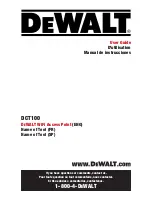
12 - 64 WiNG 5.7.1 Access Point System Reference Guide
12.3 Smart RF
Self Monitoring At Run Time RF Management
(Smart RF) is an innovation designed to simplify RF configurations for new
deployments, while (over time) providing on-going deployment optimization and radio performance improvements.
The Smart RF functionality scans the RF network to determine the best channel and transmit power for each access point radio.
Smart RF also provides self recovery functions by monitoring the network in real-time and provides automatic mitigation from
potentially problematic events such as radio interference, coverage holes and radio failures. Smart RF employs self recovery
to enable a WLAN to better maintain wireless client performance and site coverage during dynamic RF environment changes,
that otherwise require manual reconfiguration to resolve.
Within the Operations node, Smart RF is managed using the access points that comprise the RF Domain and their respective
radio and channel configurations as the basis to conduct Smart RF calibration operations.
12.3.1 Managing Smart RF for a RF Domain
When calibration is initiated, Smart RF instructs adopted radios to beacon on a specific legal channel, using a specific transmit
power setting. Smart RF measures the signal strength of each beacon received from both managed and unmanaged
neighboring APs to define a RF map of the neighboring radio coverage area. Smart RF uses this information to calculate each
managed radio’s RF configuration as well as assign radio roles, channel and power.
Within a well planned RF Domain, any associated radio should be reachable by at least one other radio. The Smart RF feature
records signals received from its neighbors as well as signals from external, un-managed radios. Access point to access point
distance is recorded in terms of signal attenuation. The information from external radios is used during channel assignment to
minimize interference.
To conduct Smart RF calibration:
1. Select
Operations.
2. Select
Smart RF
.
The Smart RF screen populates with information specific to the devices within the RF Domain with updated data from the
last interactive calibration.
Figure 12-68
Smart RF screen
Summary of Contents for WiNG 5.7.1
Page 1: ...WiNG 5 7 1 ACCESS POINT SYSTEM REFERENCE GUIDE ...
Page 2: ......
Page 3: ...WING 5 7 1 ACCESS POINT SYSTEM REFERENCE GUIDE MN001977A01 Revision A April 2015 ...
Page 4: ...ii WiNG 5 7 1 Access Point System Reference Guide ...
Page 24: ...1 4 WiNG 5 7 1 Access Point System Reference Guide ...
Page 36: ...2 12 WiNG 5 7 1 Access Point System Reference Guide ...
Page 72: ...3 36 WiNG 5 7 1 Access Point System Reference Guide ...
Page 470: ...5 386 WiNG 5 7 1 Access Point System Reference Guide ...
Page 472: ...6 2 WiNG 5 7 1 Access Point System Reference Guide Figure 6 1 Configuration Wireless menu ...
Page 624: ...7 46 WiNG 5 7 1 Access Point System Reference Guide ...
Page 724: ...9 56 WiNG 5 7 1 Access Point System Reference Guide ...
Page 783: ...12 35 Figure 12 46 Device Summary screen 4 Click File Management ...
Page 816: ...12 68 WiNG 5 7 1 Access Point System Reference Guide ...
Page 1006: ...13 190 WiNG 5 7 1 Access Point System Reference Guide ...
Page 1026: ...14 20 WiNG 5 7 1 Access Point System Reference Guide ...
Page 1028: ...A 2 WiNG 5 7 1 Access Point System Reference Guide ...
Page 1089: ......
Page 1090: ...MN001977A01 Revision A April 2015 ...
















































